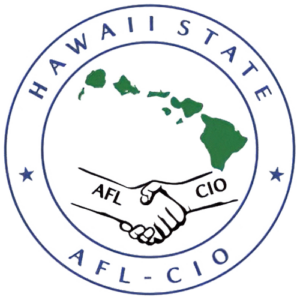Balancing Hawaii’s budget without causing more harm to our economy and severely compromising our quality of life is admittedly no easy task. However, Governor Linda Lingle’s one-dimensional approach to resolving the short fall through furloughs and layoffs to state workers will only worsen our financial problems.
As we have made clear during collective bargaining sessions, Hawaii’s public sector workers are ready and willing to do our part to help our state in these difficult times. But we cannot bear this burden disproportionately. We need a more prudent and forward-looking approach to solving the state’s budget crisis that doesn’t jeopardize essential services Hawaii residents’ need.
Furloughs and Layoffs Will Do More Harm Than Good
As state tax revenue figures decline, continuing to dictate layoffs is simply not a viable solution. Our union members are deeply concerned about the deterioration of government programs and services.
Should we suddenly stop teaching our children because there is a recession? Do we stop protecting battered and at-risk children? Do we collect less trash? No, there is a public expectation that these services and many more will go on, somehow by someone.
If reducing costs is the overriding factor, we question why the jobs being cut provide the same services that are being outsourced to out-of-state vendors with expensive contracts. The net result is more costs for taxpayers and fewer jobs for Hawaii residents.
In addition, mass layoffs would be a further drain on the state budget as unemployment insurance is paid out of the state’s general fund.
It’s important to note that in Gov. Lingle’s plan, furloughs do not preclude layoffs. The governor is publicly proposing both furloughs and layoffs. And, according to the pattern she has already set in motion, more layoffs and more concessions will follow.
The governor has stated we cannot “tax our way to prosperity”; likewise, we cannot cut our way to prosperity. In her effort to reduce costs, the governor is actually decreasing revenue for to the state. The UH Economic Research Organization projected the financial impact of the governor’s three-day per month furlough plan would be a loss of more than $200 million in state excise tax revenue.
In addition, the University of Hawaii has generated out-of-state funding that amounts to $1 million every day for the past four years, or roughly $1 billion in revenue. Gov. Lingle’s budget cuts will result in layoffs that jeopardize ongoing federal grants and private sector funding for research, while damaging the University’s status as a world-class institution.
A Collaborative, Prudent Alternative
All four public sector unions, representing more than 60,000 members, have proposed a more prudent, collaborative approach to address the shortfall by jointly conducting continuous reviews of our state’s financial condition and then making adjustments accordingly.
We also proposed that the state implement a package of solutions, which would include budget cuts, early retirement incentives, tapping special funds, and imposing a small, temporary increase in the excise tax or state income tax.
Other states facing much larger deficits have successfully adopted some form of taxation to help address their budget shortfalls. In Hawaii, it is estimated that a mere one percent increase in the general excise tax could result in $600 million in revenue for the state each year.
Instead of an incremental, methodical approach to reducing costs, the governor has opted for her wholesale layoffs, which many are criticizing for being carried out in a seemingly capricious manner. Targeting public employees will create a new deficit, not a new economy that will benefit both public and private sector.
The community’s confidence in Gov. Lingle as a leader has been greatly diminished. The one who initially came into office promising hope and a “new beginning,” seems to have lost her way. We can only hope that Hawaii’s legislators will fill the vacuum in leadership and make a positive difference in shaping Hawaii’s future.



